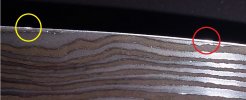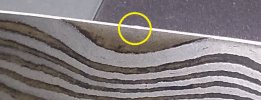- Joined
- Jun 3, 2019
- Messages
- 2,714
So I found out :-(. Thank you for the ideas!Clamp the thin material between two pieces of scrap wood when drilling the hole. Or use a step drill. Or glue your material down to some scrap with CA glue, drill the hole, then release it with acetone. Twist drills, especially large ones, are terrible at drilling thin materials so you have to help them out by supporting the workpiece properly. Just putting it on top of a piece of scrap isn’t enough to get a clean hole.


